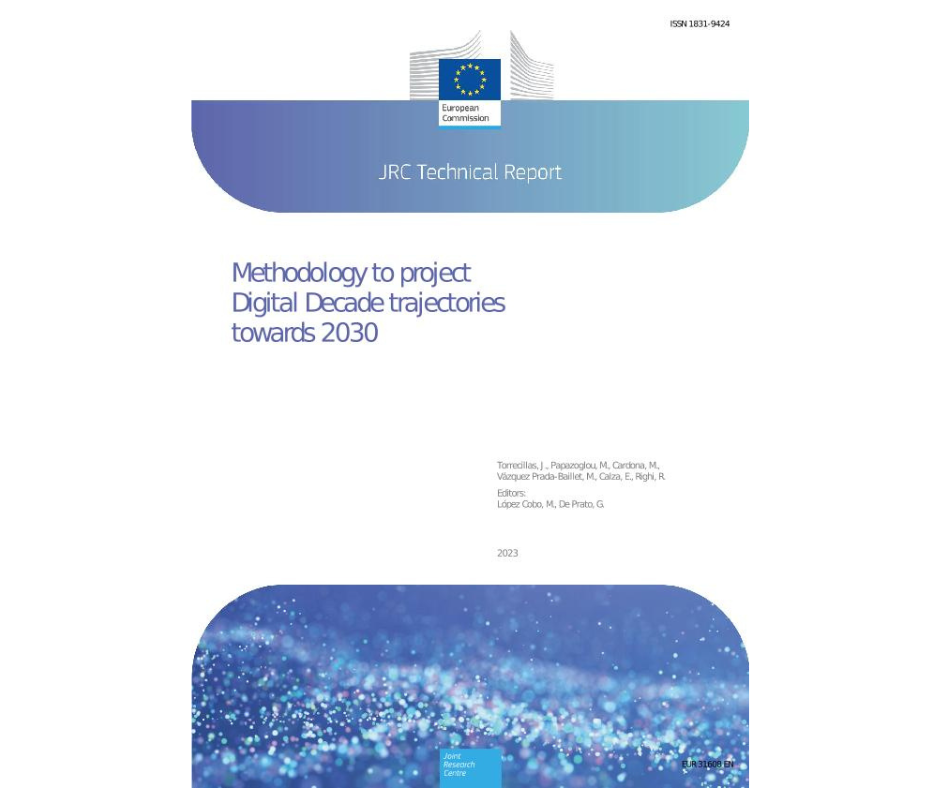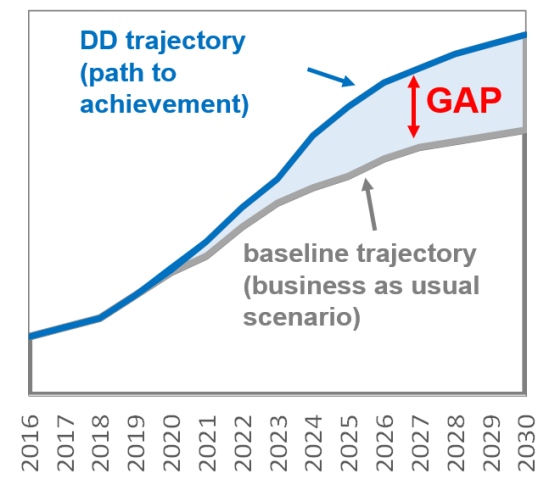Two reports delve into the monitoring system that measure Member States’ progress towards the achievement of the Digital Decade targets. The first one –published in 2023– presents a methodology developed to estimate the EU trajectories for this goal, while the second one, published in 2024, elaborates a methodology to consistently aggregate data at national level, taking into account structural differences in population, households and business ecosystems.
JRC report - Methodology to project Digital Decade trajectories towards 2030
This report outlines the JRC methodology used to project the Digital Decade trajectories towards 2030. The methodology allows to estimate the future evolution of Key Performance Indicators (KPIs) established by the Digital Decade policy programme. Monitoring the progress of the Digital Decade targets is crucial to support evidence-based decision-making.
Using econometric techniques, we estimate two scenarios for each KPI: the ideal Digital Decade trajectory and the baseline one (or business as usual scenario).
The comparison between the two trajectories provides insights into which targets are more likely to be achieved, highlighting gaps and opportunities for evidence-based policy interventions. The results allow Member States to measure their progress against individual KPIs and strategically inform national roadmaps.
We describe two models to estimate these trajectories:
- for indicators that exhibit a technology diffusion nature, we use a logistic curve
- for indicators that present an expected constant increase or decrease in its trend, a linear model is applied
We acknowledge some challenges in estimating trajectories, mainly related to data availability; comparability over time, especially breaks in series due to changes in the indicator's definition; and lack of data.

JRC report - Methodology to aggregate Member States’ Digital Decade targets at European Union level
EU Member States prepare their national strategic roadmaps to support the collective achievement of the Digital Decade general objectives and targets. These roadmaps include the main planned and adopted policies at national level and explicit concrete commitments regarding the digital targets, as well as their national trajectories for each Digital Decade key performance indicator (DD KPI) until 2030.
As the DD KPIs are defined at EU level, the EU position will be based on the addition of individual national efforts as declared in Member States’ strategic roadmaps. To monitor progress, it is crucial to have accurate and comparable data at Member States level to obtain a wide and complete picture of the European path towards the targets.
This report proposes a consistent methodology for aggregating Member States' targets at the EU level to monitor progress toward the Digital Decade Policy Programme 2030. The methodology ensures consistency across the DD KPIs, proposing different methods depending on the nature of the indicators analysed.
The indicators are grouped into three categories:
- those for which the aggregation takes the form of a simple sum (Category 1)
- those for which a weighted average is needed, where country values are weighted following an objective criteria (Category 2)
- those that use a simple average as aggregation formula (Category 3).



